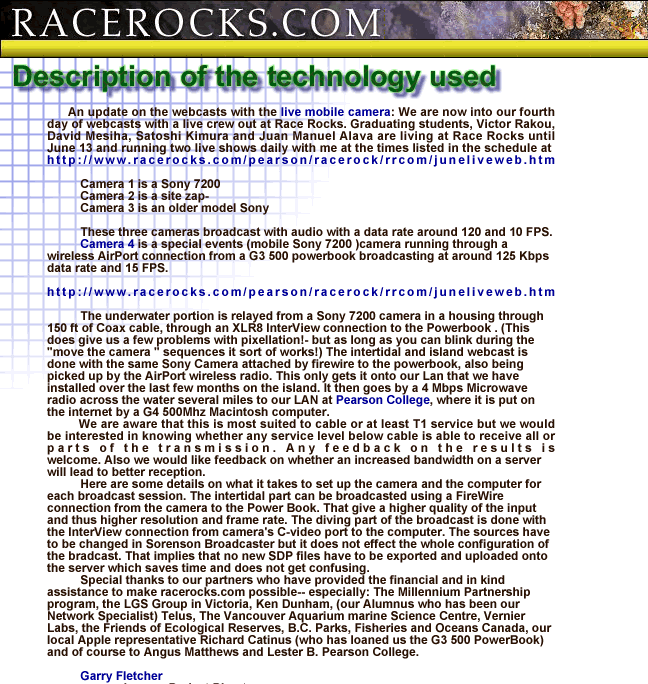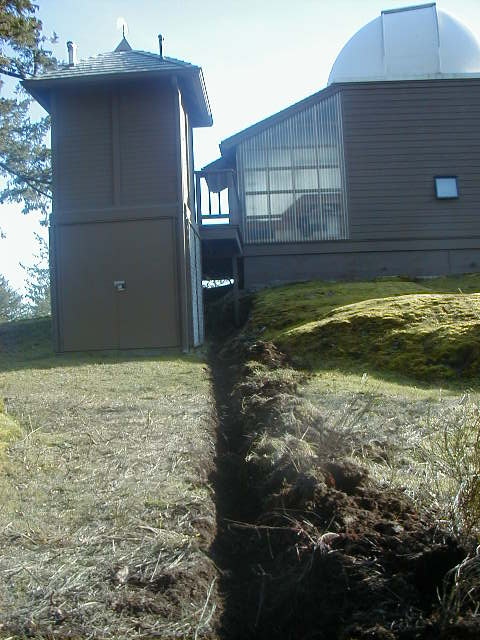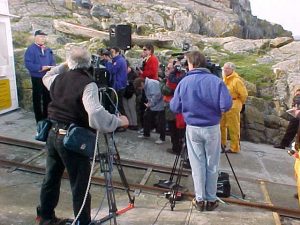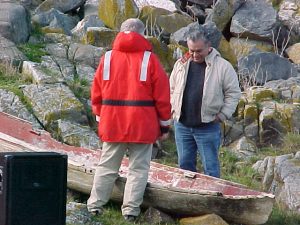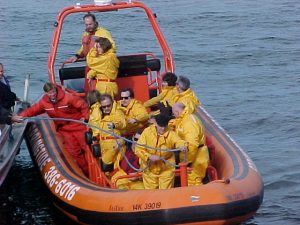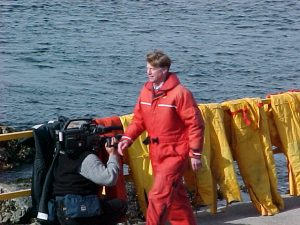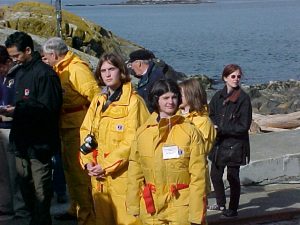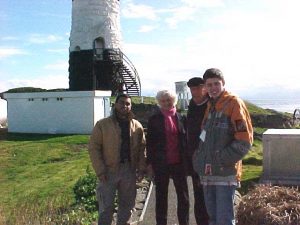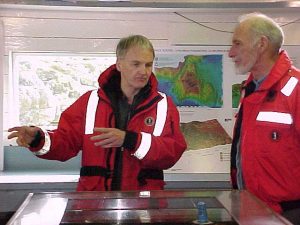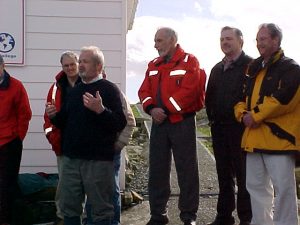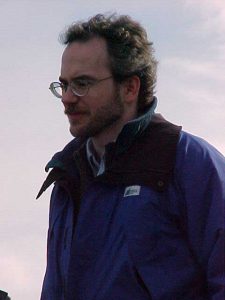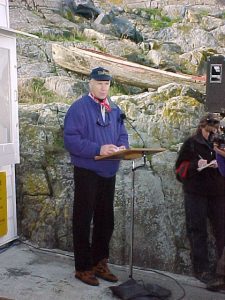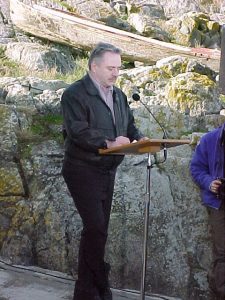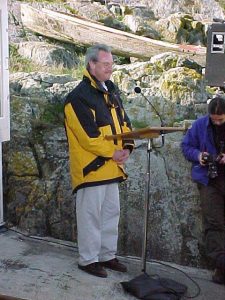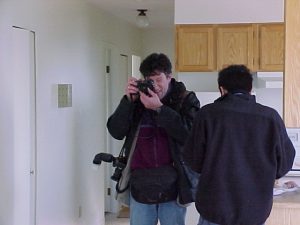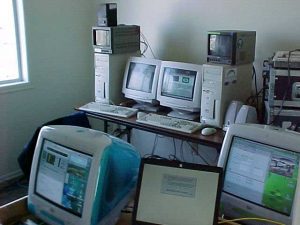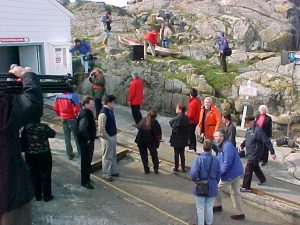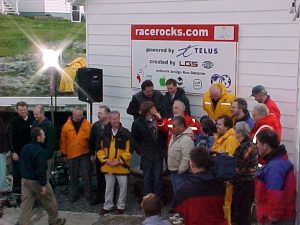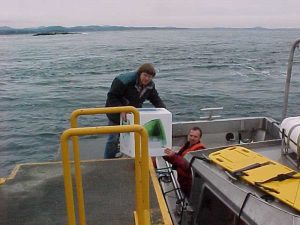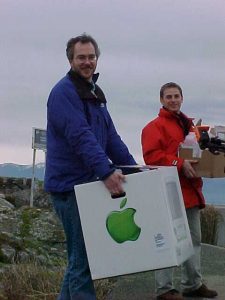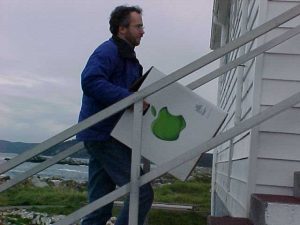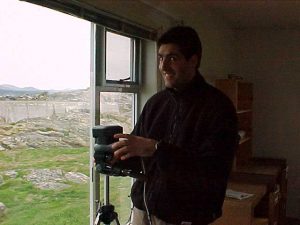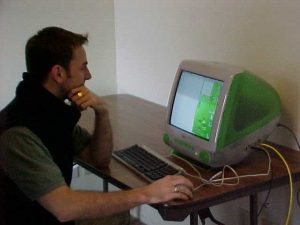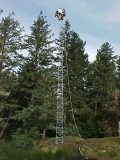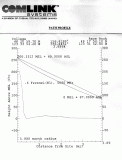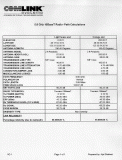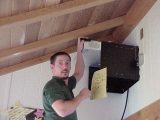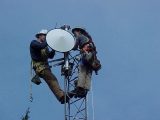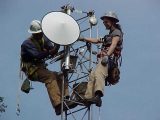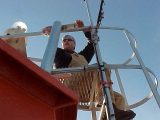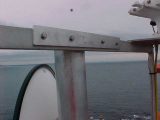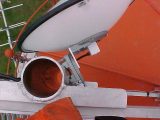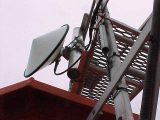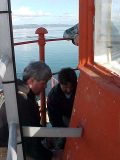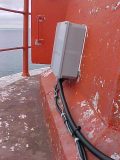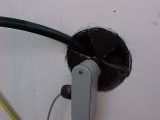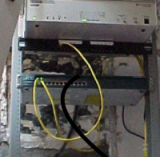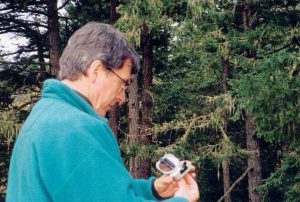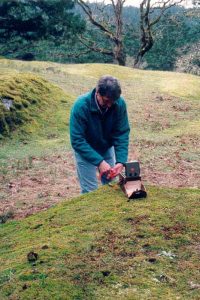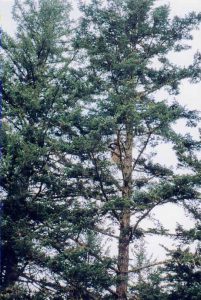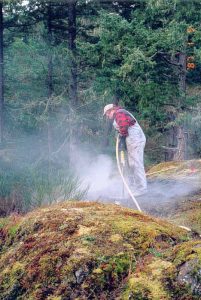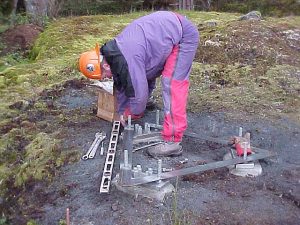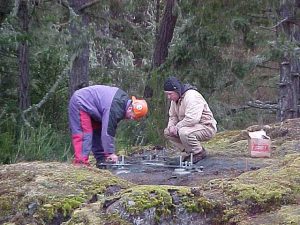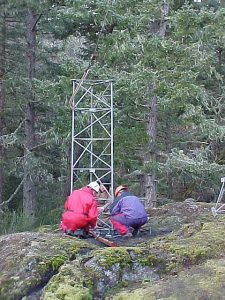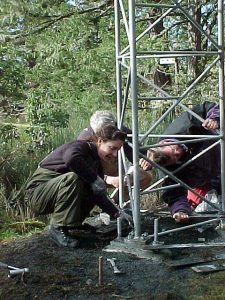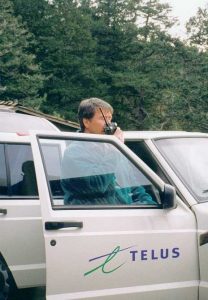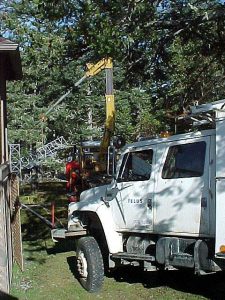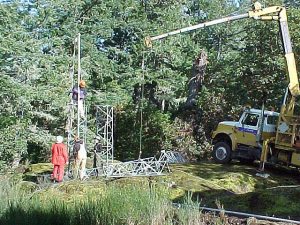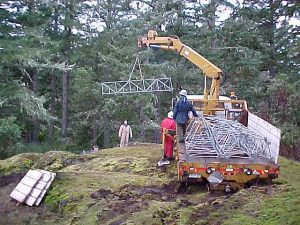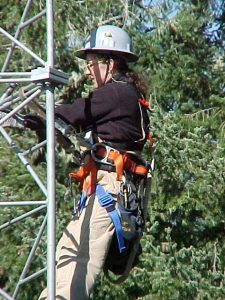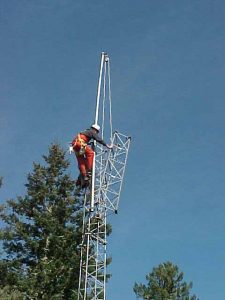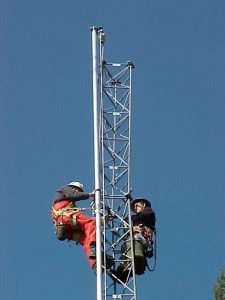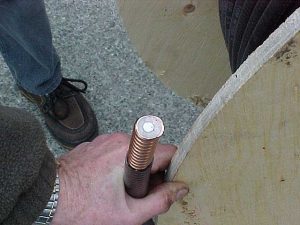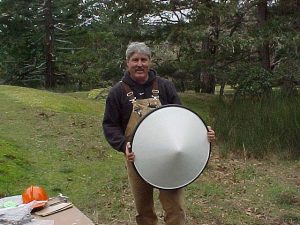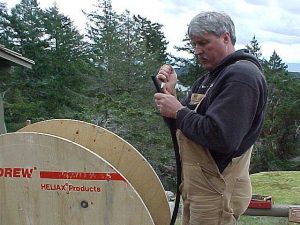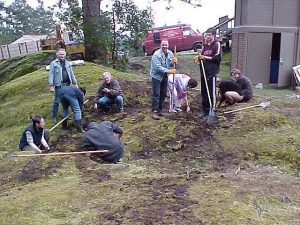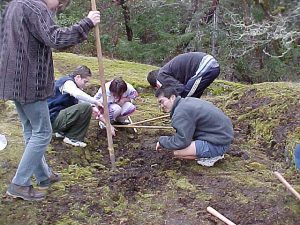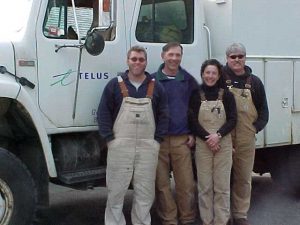This screen capture gives an explanation of how we did the first live webcasting for a week from Race Rocks in June 2000
Category Archives: Technology
Webcasting from Race Rocks for the Johan Ashuvud Project week in 2000.
For two weeks in May and June of 2000, Lester Pearson College graduating students, Victor Rakou, David Mesiha and Satoshi Kimura, and in the last week, Juan Manuel Alva and Martin Kryl, joined the sea gulls and stayed at Race Rocks running daily programs on a live camera, and broadcasting directly to the web. Faculty member Garry Fletcher worked with them for the daily webcasts from the shore and from underwater. Sponsorship for this week came from the Johan Ashuvud memorial fund.
Pictures toFiollow
Building the LAN for Race Rocks ( racerocks.ca)
Digging the Trenches for cable:
At Race Rocks: This composite image was made from a set of images taken from the balcony on the tower in mid-May of 2000. The route of the conduit installed in February is barely evident in the grass areas.
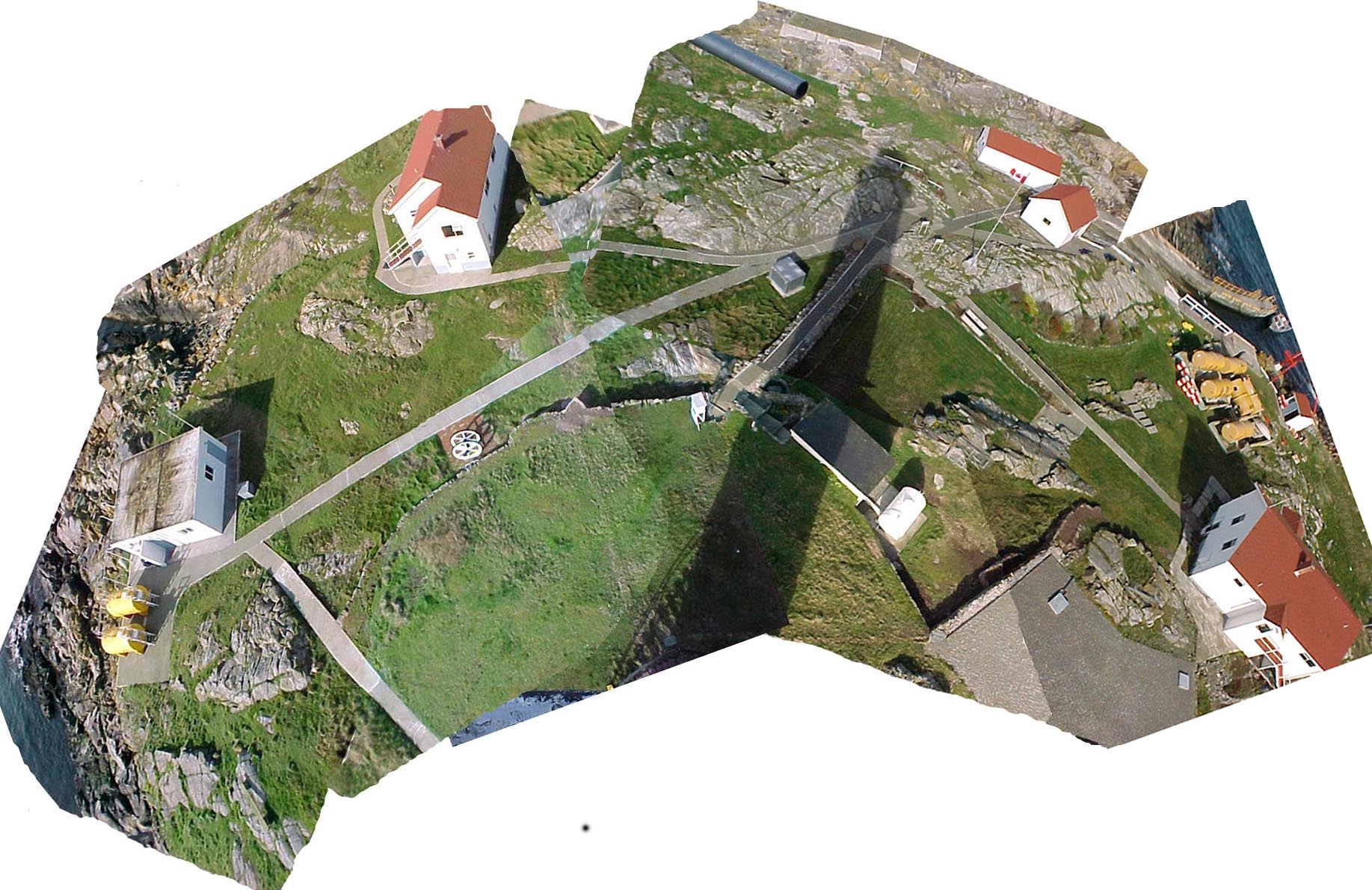
At Pearson College: Behind the observatory at Lester B. Pearson College, this trench carries the cable from the antennae donated by Telus to the observatory.
Official Launching of the Millennium Project for Race Rocks
On March 11. 2000 a special gathering ceremony was held at Race Rocks Ecological reserve to recognize the federal governments contribution to the Race Rocks Millennium project, and to ‘officially open the project.
- The Millennium program flag flies under the Canadian Flag for the opening ceremonies at Race Rocks March 11, 2000
- ceremonies at Race Rocks March 11, 2000 Media line up to record the opening events
- Garry and Tom Sampson examine old First Nations dugout Canoe which lies at Race Rocks
- The United World College Flag flies from Second Nature.
- Dan Kukat of Springtide Charters assisted with transportation
- Jack Matthews and guestss aboard the boat.
- Other Guests included Phil Guyer, president of the UWC of the American South West,
- Students Laura and Unai accompanying the guests as they sign the atttendance book.
- Jack Matthews, the founding director of Pearson College and Naomi Hoare, the wife of the founding Director of Atlantic College UWC.
- Garry Fletcher explaining the Marine Protected Area Pilot Process and the Schools program to the Honourable David Anderson, Minister of the Environment representing the Honourable Herb Gray, on behalf of the Millennium Partnership Program of Canada.
- Angus Matthews and guests from Telus
- Garry Fletcher welcoming guests and acknowledging the Federal Government Millennium Program.
- Ken Dunham, a year 10 graduate of Pearson College who had done the networking on the island described the process to the press.
- LGS representative.
- Telus representative.
- Duane Prentice, a former PC student now of of Nomadic Visions, was one of the many photographers on hand to the record the events of the afternoon.
- The equipment room with the iMacs in the foreground which receive the video input to broadcast to our system , and the Online Broadcasting equipment that was used for the special day.
- A final assemblage of the sponsors, BC Parks representatives, Federal Fisheries, First Nations, Pearson College Students and other invited guests line up for photos.
Opening day of the racerocks.com Millennium Project
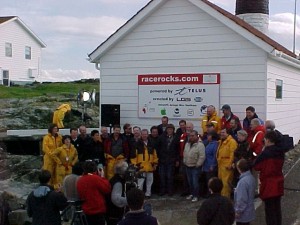 A final assemblage of the sponsors, BC Parks representatives, Federal Fisheries, First Nations, Pearson College Students and other invited guests line up for photos.
A final assemblage of the sponsors, BC Parks representatives, Federal Fisheries, First Nations, Pearson College Students and other invited guests line up for photos.
Honourable David Anderson, Minister of the Environment represented the Honourable Herb Gray, on behalf of the Millennium Partnership Program of Canada.
ee the ful set of photos:
http://www.racerocks.com/racerock/rrcom/openingday/opening.htm
First Computers Installed at Race Rocks: News Update Feb 25
KEN DUNHAM and the Crew from LGS I install the FIRST of the iMac COMPUTERS and SONY and SITEZAP CAMERAS at RACE ROCKS.. February 2000
- Chris Blondeau and Mike Slater unload the first iMac at Race Rocks Docks. Three iMacs were eventually installed to carry the three live video streams.
- first iMac at Race Rocks Docks. Three iMacs were eventually installed to carry the three live video streams. Ken Dunham , Kevin and Robin carry the first iMac that will process images from the camera.
- Ken and Robin with the goodies.
- Ken with first iMac on the steps of the science center- (now the most southerly point in Western Canada with an iMac running live streaming video!! )
- Kevin of LGS setting up the Site Zap camera in its temporary position for testing.
- Robin Ashmore of LGS on the iMac in the set up process. Robin has worked at a fast pace to reconfigure the sitezap camera and the system to get it working for this application.
NOTE : By 4:00 PM. today, Feb. 25, 2000, the first live images came up in QuickTime on a computer in the marine biology lab at Lester B. Pearson College. It is hard to adequately express enough our deep appreciation to all those who have worked especially hard this week to get things working well ahead of schedule.
- –Aengus MacIntosh and his team from LGS for the camera and computer configurations,
- –the crew from Telus and Glentel for the radio and antenna installation
- –Ken Dunham our alumni from year 9 who flew out from Ontario to perform his networking wizardry at the college and Race Rocks,
For all your efforts we are particularly grateful.The beautiful live streaming video of waves breaking on Race Rocks that is coming through this afternoon to the college network makes this collaborative process incredibly worthwhile.
Garry Fletcher,
Educational Director of racerocks.com
Faculty member, Lester B. Pearson
VIDEO, I-MAC UP AND RUNNING
The first camera, along with the I-mac required to run it, were also brought out to the island. The team hooked up all of the equipment out on the rock, and completed set-up of the LAN. On Friday, the first remote video feed from Race Rocks was displayed on a computer in the Pearson biology lab. The transmission from Race Rocks to the campus is running at 98-99%, in spite of the project being several days ahead of schedule. Any scepticism as to the site being on-line in time for the March 11 deadline were proved unfounded, as all of the components necessary for live video transmission were up and running by the 26th of February. Peter Seem(LBPC)
Radios and Microwave Dishes are Installed at the Observatory and at Race Rocks
News update Feb 23-24
Radio on the Rock….by Peter Seem (PC)
The 35 meter antenna for the microwave reception from Race Rocks which was contributed by Telus is installed behind the observatory at Pearson College.This tower was a decommissioned one Telus donated to the project from another part of BC.
- The Telus antenna
- Path Profile of Radio Wave from Race Rocks to the antenna behind the observatory.
- 5.8 GHz 10BaseT Radio – Path Calculations.
- Comlink technician Dion Jacobsen installs the radio in the observatory
- Susan and Grant from Telus …
- hanging the radio dish on the antenna….
- at the observatory
The other part of the installation was at Race Rocks Ecological reserve where the microwave antenna and transmitting infrastructure equipment were transported and installed in the Lighthouse toweron Great Race Rocks.
PRESERVING A HERITAGE SITE
The Telus crew, along with the help of Pearson’s electrician, Don Nixon, and Dion Jakobsen from Commlink, were presented with a unique problem when they went out to the island. The lighthouse, on which the island-side antenna and transmitter are to be installed, is a Heritage Site. As such, they needed to find a way to install all of the new electrical and data-carrying wires from the base of the tower to up above the light compartment without drilling new holes or cutting into the rock.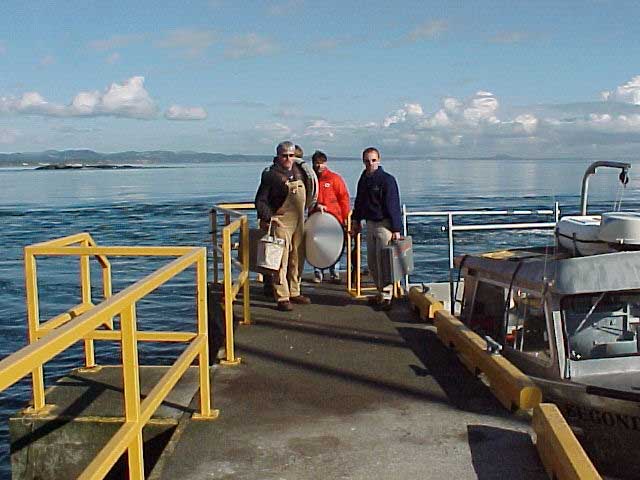
Arriving at Race Rocks with the new microwave dish
- Affixing the bracket on top of the Light tower at Race Rocks
- Bracket installation for the dish
- Installed dish viewed from above
- above the microwave dish viewed from below
- from below the microwave dish viewed from the side
- the microwave dish viewed from the side Don Nixon our electrician works with the Telus crew to solve the problem of getting the stiff cable into the tower.
- The challenge of getting inflexible radio cable from the dish outside to the radio inside without compromising the heritage structure was creatively solved.
- By using an existing tower vent to enter the lantern room.
- The hole through the edge of the hatch to the lantern room.
- The radio and switch fit neatly in under the stair-ladder of the tower,
- completing this essential component for transmission of the signal from Race Rocks to Pedder Bay.
After looking at a diagram of the tower and examining the structure, they were able to manoeuvre relatively inflexible cable up through existing conduits and ventilation shafts. The transmitter was fixed underneath the stair-ladder, and the dish was attached to the metal cage of the lighthouse and lined up with the dish at the observatory.
Thanks to PC student Peter Seem for this writeup.
Telus Crew Installs Microwave tower- Feb.22, 2000
The TELUS Crew Installs the Antenna on Observatory Hill behind Pearson College.
- Compass orientation.
- Sighting from a nearby tree.
- nearby tree. Len starts the drilling of the anchor holes.
- The triangular base of the tower is laid out.
- the tower is laid out. Holes are drilled in the rock
- drilled in the rock First structure emerges
- emerges. Susan checks on anchors
- Telus truck
- The crane lifts tower sections into position
- Susan and Don from Telus assemble the tower
- getting higher
- Assembling the antenna to be installed at the top.
- Ed shows the cable thickness
- Ed with antenna.
- Ed and cable spool
- John and the students in village service turn up for “site remediation”
- students covering trench after departure of truck.
- The Crew from Telus who did the installation

Not only has the antenna been donated, but the costs of crew and equipment for several days of installation, and the routers for operation have been provided. Telus has also agreed to assist the college in its bandwidth requirements necessary to run the streaming video from Race Rocks . We greatly appreciate their commitment as a collaborating partner in this unique venture.
Garry Fletcher on behalf of the students and faculty of Lester B. Pearson College
LGS Group goes to Race Rocks
Scott Nichol, Western Coordinator, Creative Group of LGS Group Inc Business Unit and other members of the LGS team accompanied Garry Fletcher and Angus Matthews to Race Rocks to see the dsite they are working with for the new racerocks.com internet.
LGS Group Inc. – is one of Canada’s largest full service IT consulting firm with 2100 employees in 20 offices in Canada, Europe and the US. LGS is donating the time and resources to provide project management and web design services in the creation of racerocks.com. Along with their ability to capitalize on emerging Internet technologies to promote the project, LGS brings essential knowledge, skills, and expertise.
racerocks.com Project Update Feb 13, 2000
The week of February 6 through 13, 2000 has plotted more progress for the racerocks.com project.
With only 27 days remaining until the system is scheduled to go on line, daily progress is required so we will meet the project deadlines.
On Monday, Coast Guard officials granted permission for us to temporarily install a 24 inch radio antenna atop the historic Race Rocks lighthouse tower. Required for the transmission of our Race Rocks video
and data signal, the antenna will be fastened by Coast Guard technicians to the ladder structure above the main light room on the tower. We are very grateful to Coast Guard officials Fred Stepchuck and Noelani Taylor for reviewing our request so efficiently.
Wednesday morning Lyle Kosola, the radio engineer from Comlink caught the 7:00 am BC Ferry from the mainland to Vancouver Island along with Telus antenna and microwave specialists Al Mireau, Dave Farley and Rob Robinson. These top Telus staff members pulled together to make the radio link happen. While Chris Blondeau took Lyle and Dave to Race Rocks Al and Rob drove to the top of the hill near Pearson College’s observatory. As the island crew laboured up the spiral staircase in the 140 year old light tower Dave set about the tough task of hand climbing a 200 plus year old Douglas Fir tree. At the 60 foot mark Dave thankfully and somewhat breathlessly reported seeing the top two stripes of the black and white lighthouse. With a strobe light held just in front of a mirror Dave was finally seen in his tree by Chris Blondeau from atop the lighthouse. With two towering trees framing the radio path like goal posts on a ridge Lyle collected the information he would need to determine the tower height required to make all this work. The swell from Tuesday’s storm was still throwing waves at the Race Rocks jetty despite the pleasant day causing the Pearson College workboat Second Nature to plunge on her spring lines so it was decided to evacuate the island crew as quickly as possible. At the antenna location Al determined the best lay out for the tower and Lyle scouted locations for the radio equipment and wiring. A very good day filled with promise.
On Thursday Lyle completed his calculations and determined that the tower height could be reduced to 60′ provided we shot the radio right through the middle of the Douglas Fir “goalposts” on the Rocky Point ridge. Its worth a try. The shorter tower (as opposed to the 100′ considered) will have much less aesthetic impact at the college site, protect a clear sky view for the College’s telescope and, we hope, save Telus a bit of money. The antenna tower was a late addition to the Telus contribution.
Friday was a very positive day for the development of the project. Work on wiring Great Race Island for the network that system designer Ken Dunham has prescribed is 75% installed. Al Mireau from Telus reports that antenna installation will begin on Tuesday February 15. Our ever watchful professional worry specialist Aengus MacIntosh will review the critical time paths at this stage. Unlike the picture 10 days ago this looks like it can actually happen! We have a few wrinkles in our server delivery plans. We meet with Ian Scott our guardian angel at Telus to devise final plans for delivery of the signal to the internet. Ian as always has some creative solutions. We also have a good conversation with Richard Catinus our contact at Apple. We are very keen on using Apple’s remarkable QuickTime software to stream our video on the net. This will of course also commit us to Apple’s computer equipment. Garry Fletcher has lusted for Apple’s new G4 computer. We are very close to a decision. Mid afternoon we meet with John Nightingale, Director of the Vancouver Aquarium Marine Science Centre and his senior science and external relations staff. Their enthusiastic support backed by a significant financial contribution is greatly appreciated. At the end of a network planning discussion with Ken Dunham it suddenly dawns on me that we have spoken with every one of our sponsors and suppliers today and they are all doing their very best for us.
Saturday, members of the public and various interested groups joined DFO and BC Parks staff to review the status of the Race Rocks Marine Protected Area plans. Marc Pakenham the DFO coordinator has lead an exhaustive series of community consultations on the plan along with Jim Morris from BC Parks. Brian Smiley, a DFO scientist gave a compelling presentation about the ecological values of Race Rocks. There appears to be real enthusiasm for the protection of the Race Rocks area and many creative ideas of how the opportunities for public access and educational uses could be accommodated were suggested. The last public presentation on the MPA plan will be at the Olympic View Golf Club on Wednesday February 16, 2000 at 19:00 hrs.
PROCEED TO NEXT UPDATE- FEB 22/2000
Thank you for your interest.
Angus Matthews

